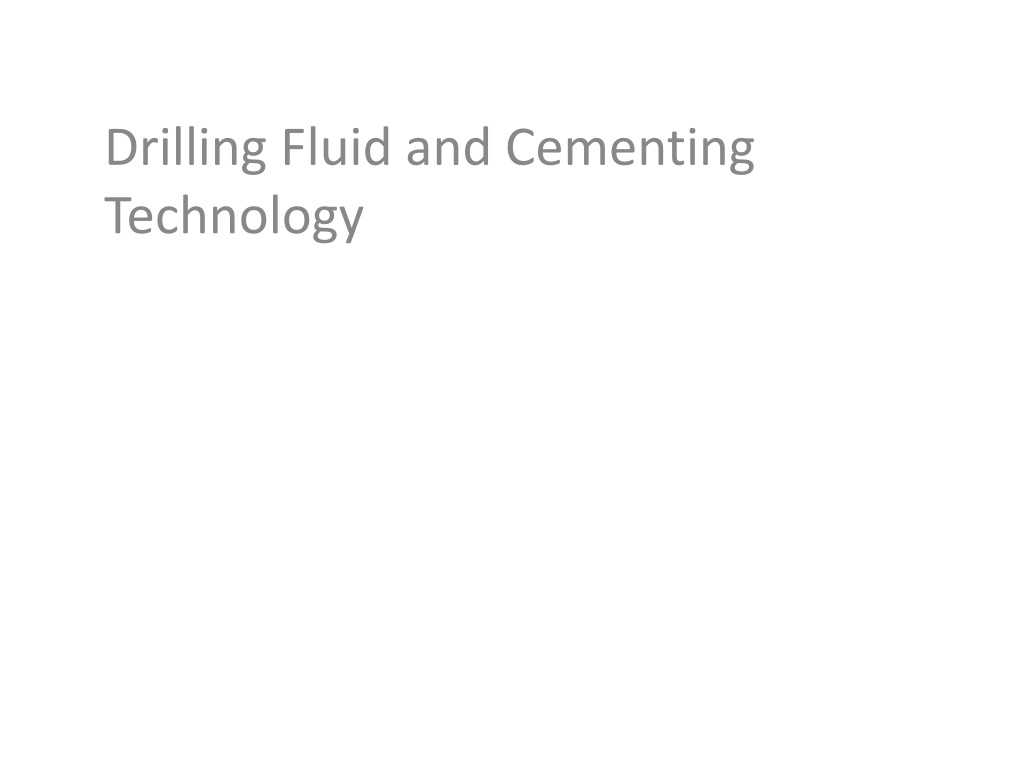Understanding Drilling Fluid and Cementing Technology in Oil & Gas Drilling
Explore the essential components of oil and gas drilling, including the rotary drill bit, drilling mud, drill string, well casing, derrick/platform, striking oil process, and blowout preventer. Learn about the techniques and equipment used in the drilling process to extract oil and gas efficiently.
Download Presentation

Please find below an Image/Link to download the presentation.
The content on the website is provided AS IS for your information and personal use only. It may not be sold, licensed, or shared on other websites without obtaining consent from the author. Download presentation by click this link. If you encounter any issues during the download, it is possible that the publisher has removed the file from their server.
E N D
Presentation Transcript
Drilling Fluid and Cementing Technology
Oil & Gas drilling
The BIT Rotary drill bit designed to crush rock Carbide or diamond impregnated steel
Drilling Mud Crushed rock has to get out of the hole, also the hole must be supported use drilling mud to do both Can use air, water, water with additives (clays, chemicals to affect viscosity and heat transfer), oil, and synthetic fluids
Drill String Combined term for the bit, the drill stem (hollow, turns the bit and pushes fluid down), annulus (outside the stem where the mud comes up), and drill collar (weight to push bit down into the rock)
Well casing Casing is the tube (often steel) that is sealed to the borehole with cement prevents leakage (in or out) and strengthens the hole
Derrick / Platform Working area for all drill operations, on land or at sea, engines, equipment, casing and string storage Derrick is the part sticking up that feeds casing/string down the borehole Also contains the machines for turning the drill string and bit, injecting and collecting the mud
Striking Oil What happens when the bit finally breaks through the capping formation and into the reservoir rock at an oil & gas trap?
Blowout preventer Device to control and stop erratic pressures and prevent a blowout























